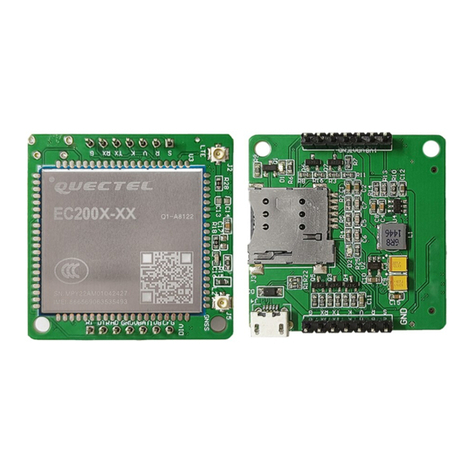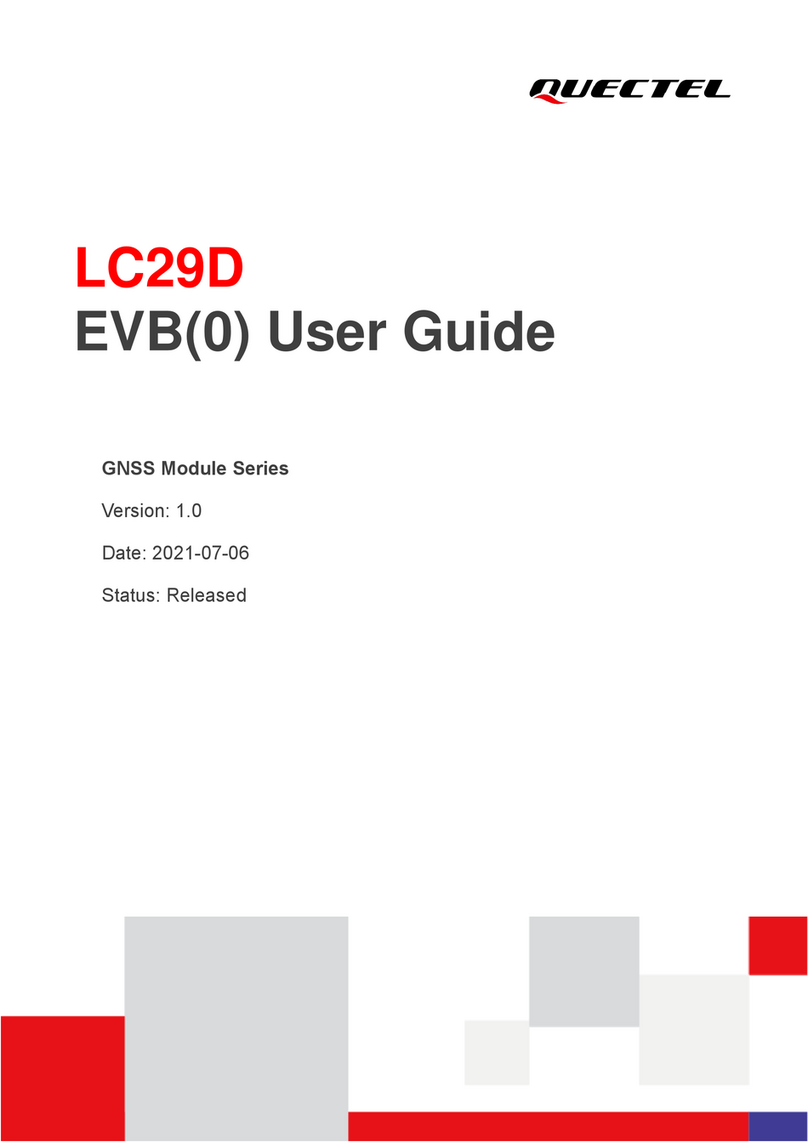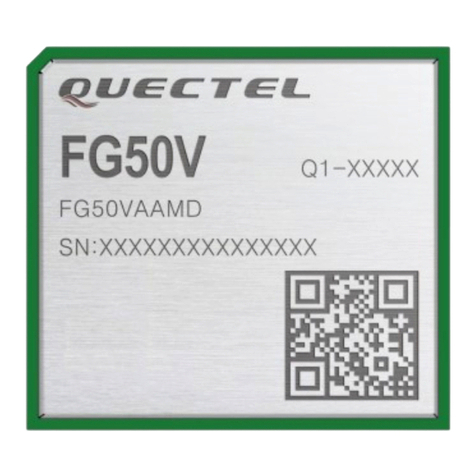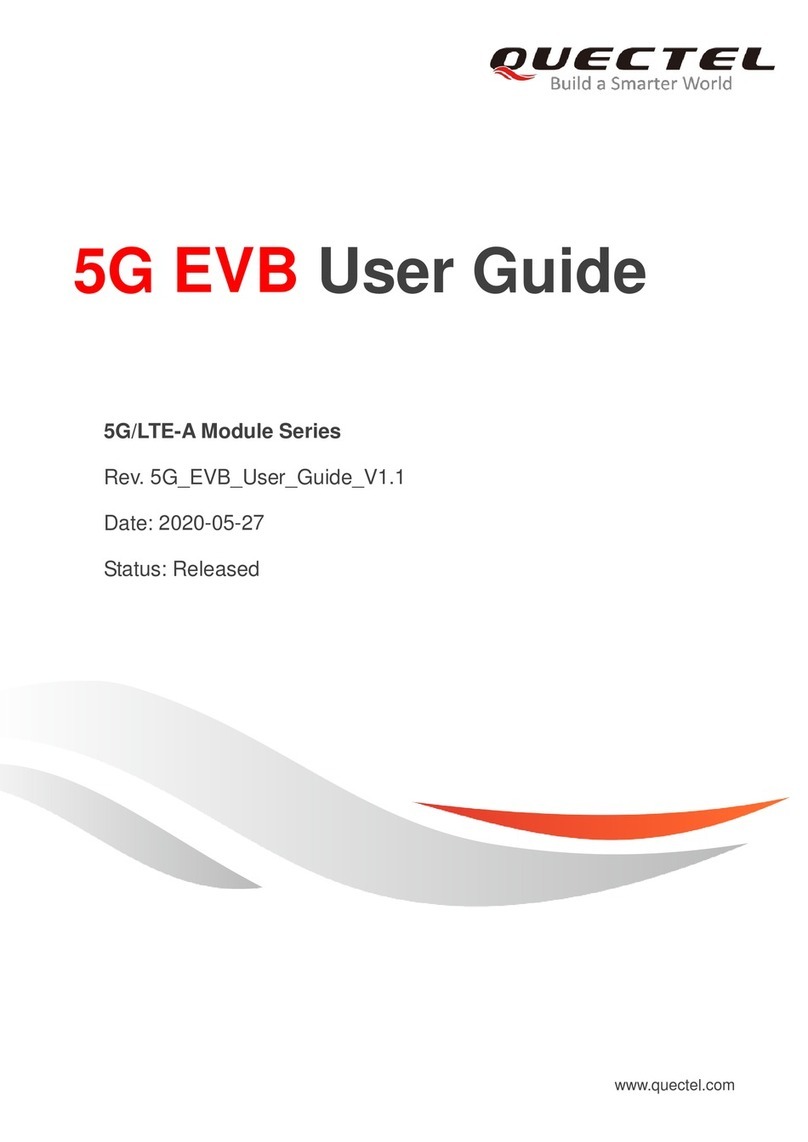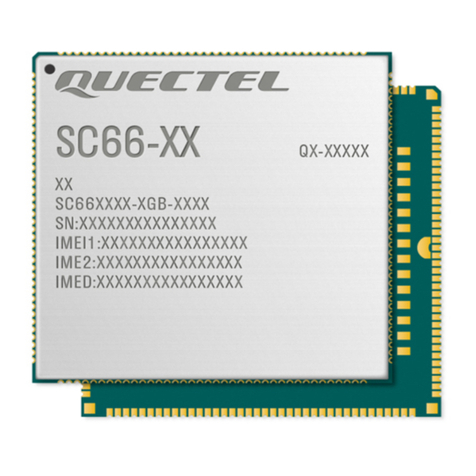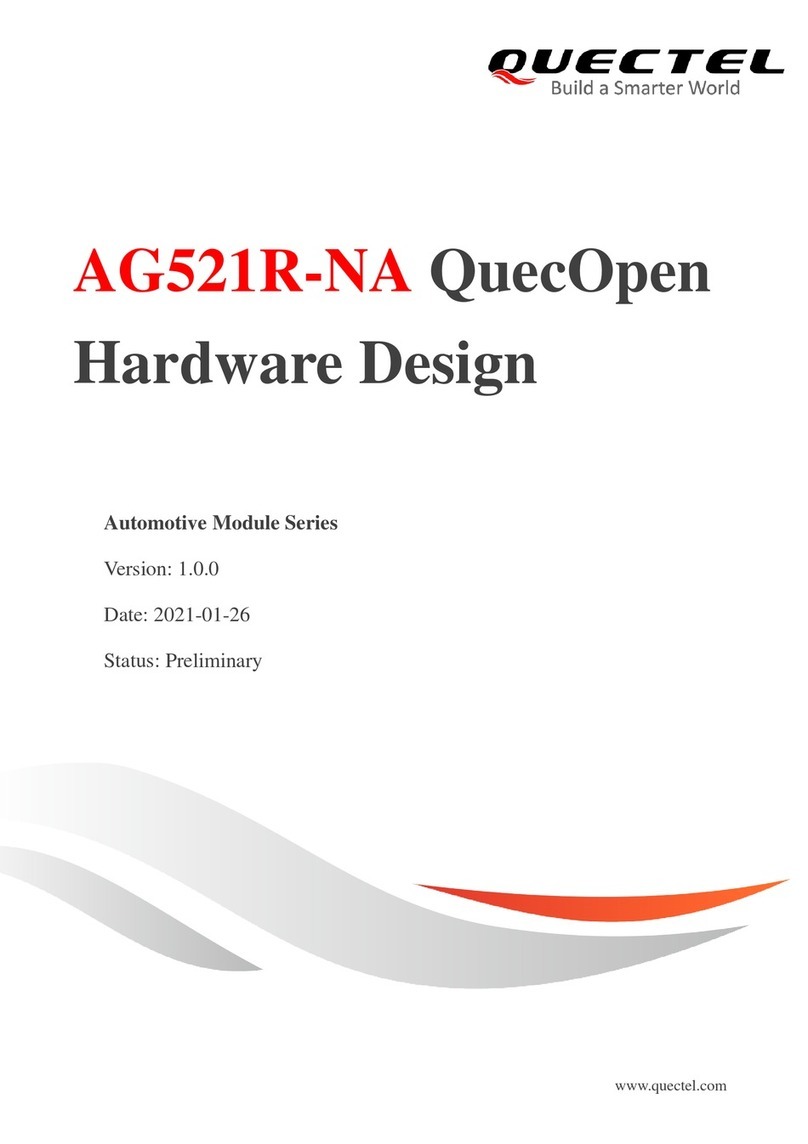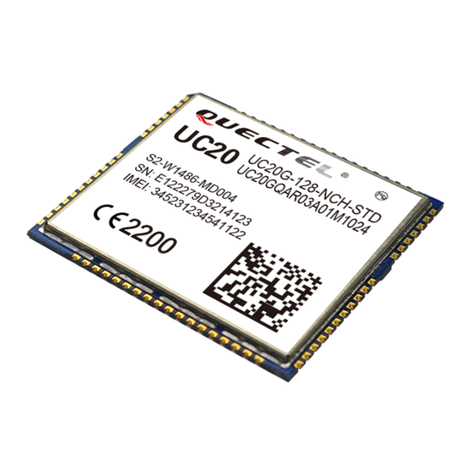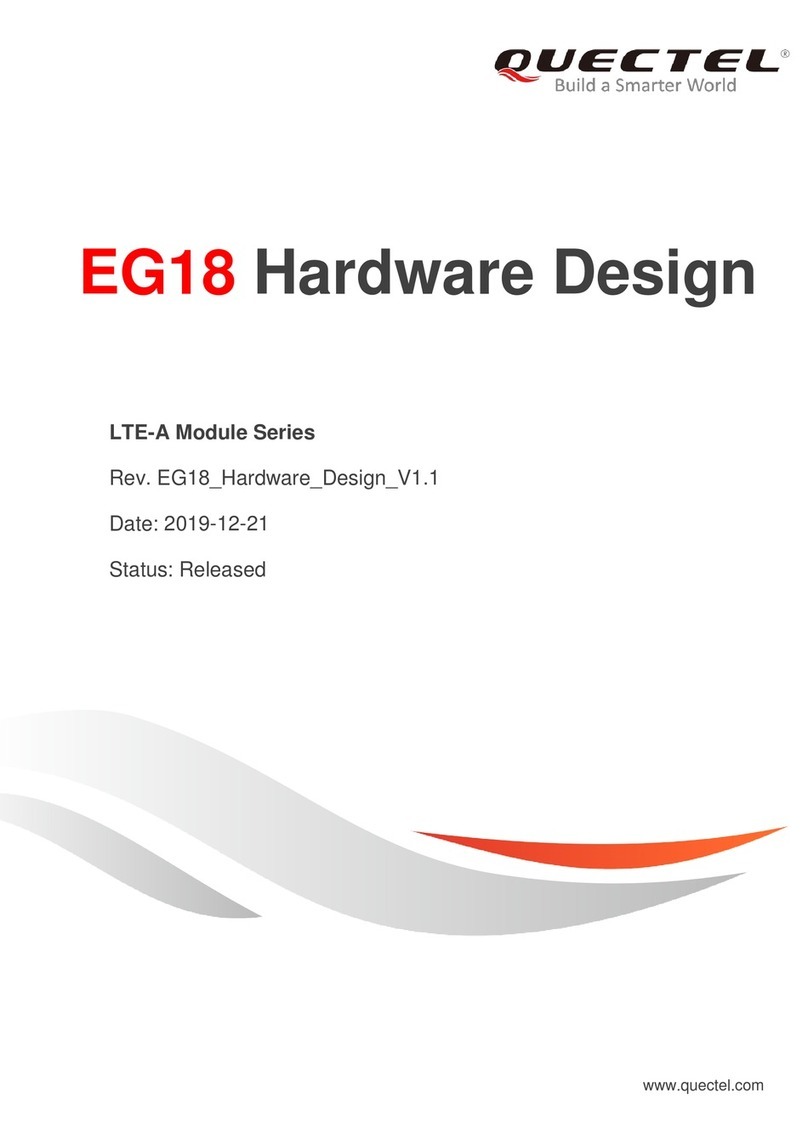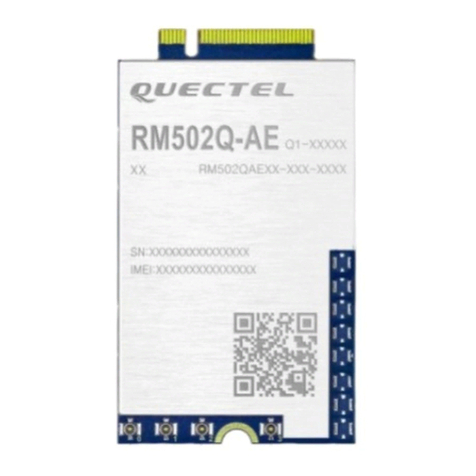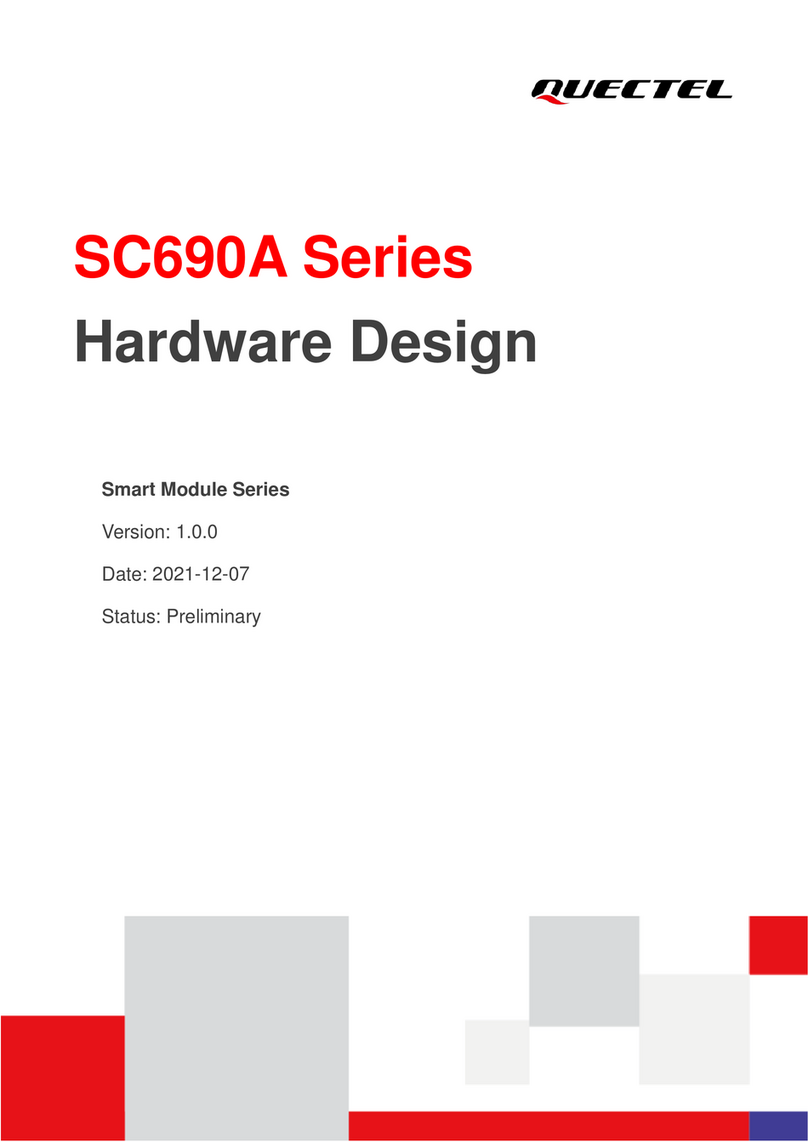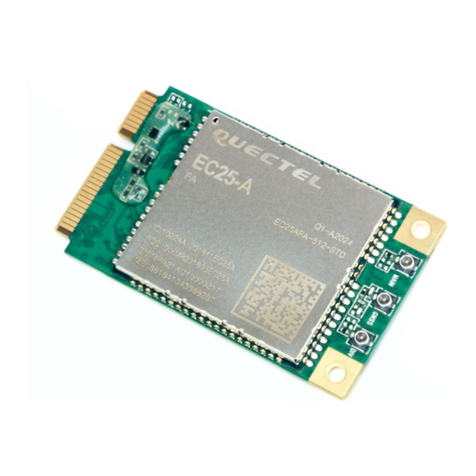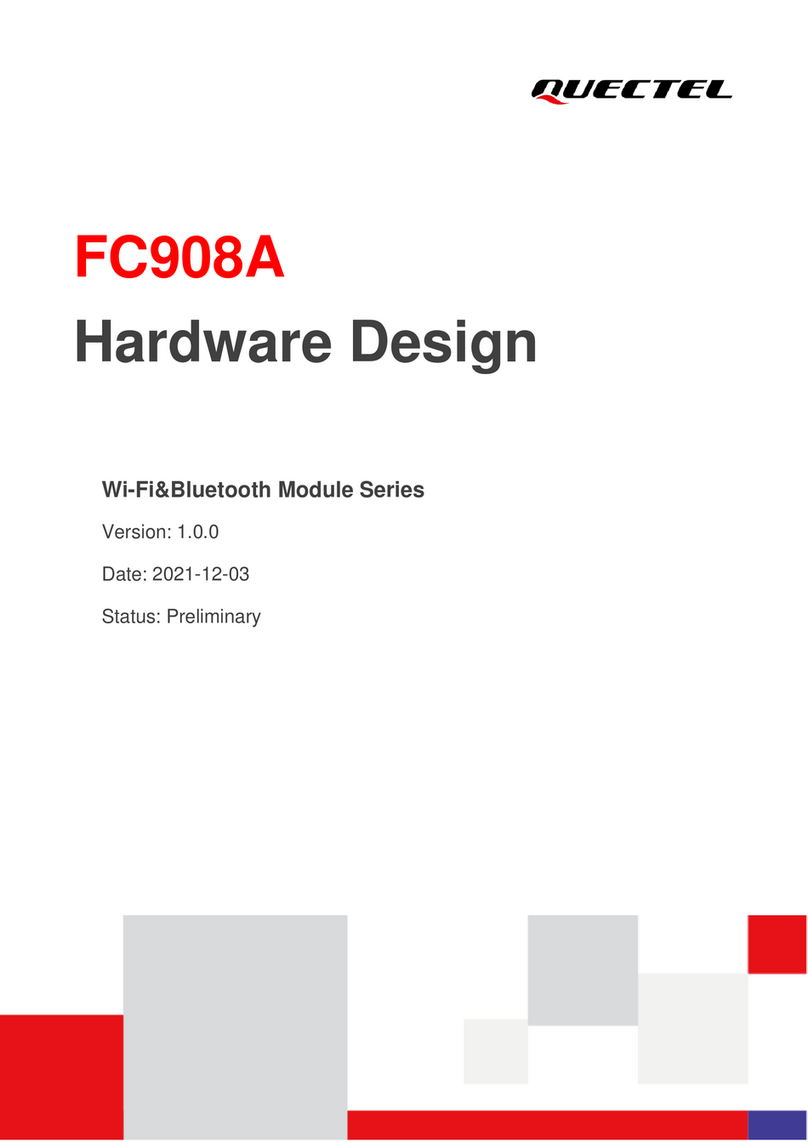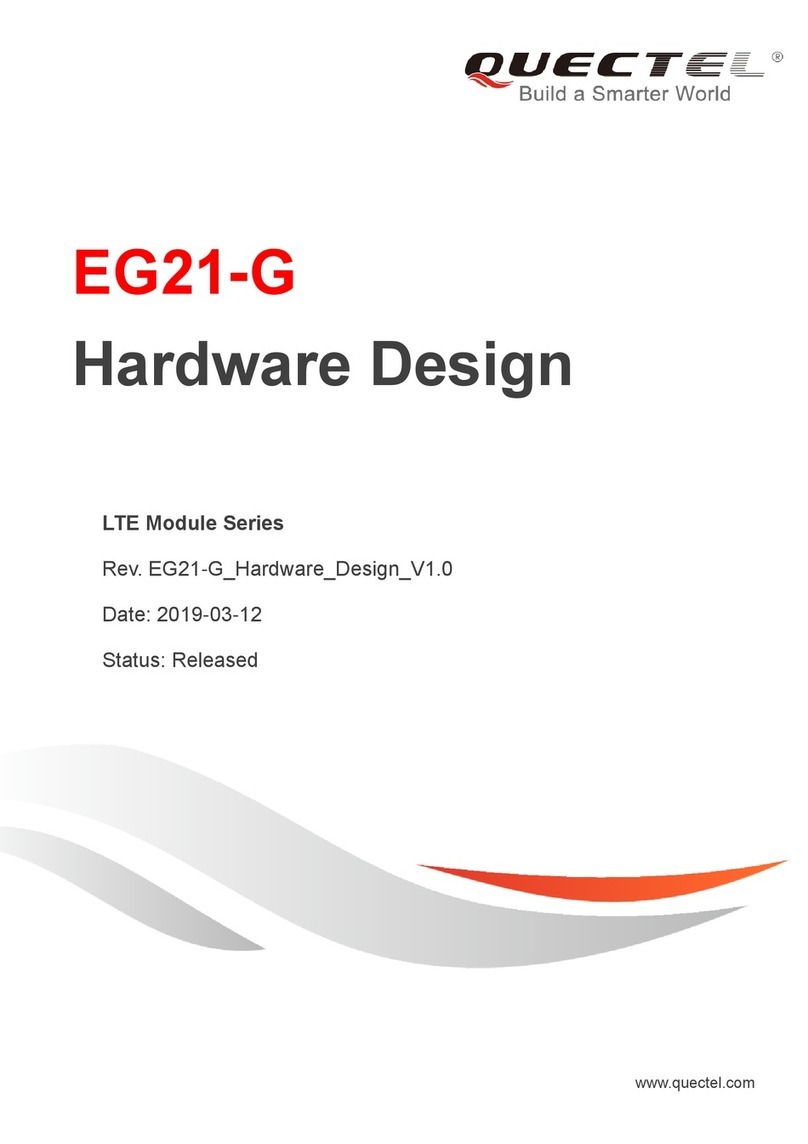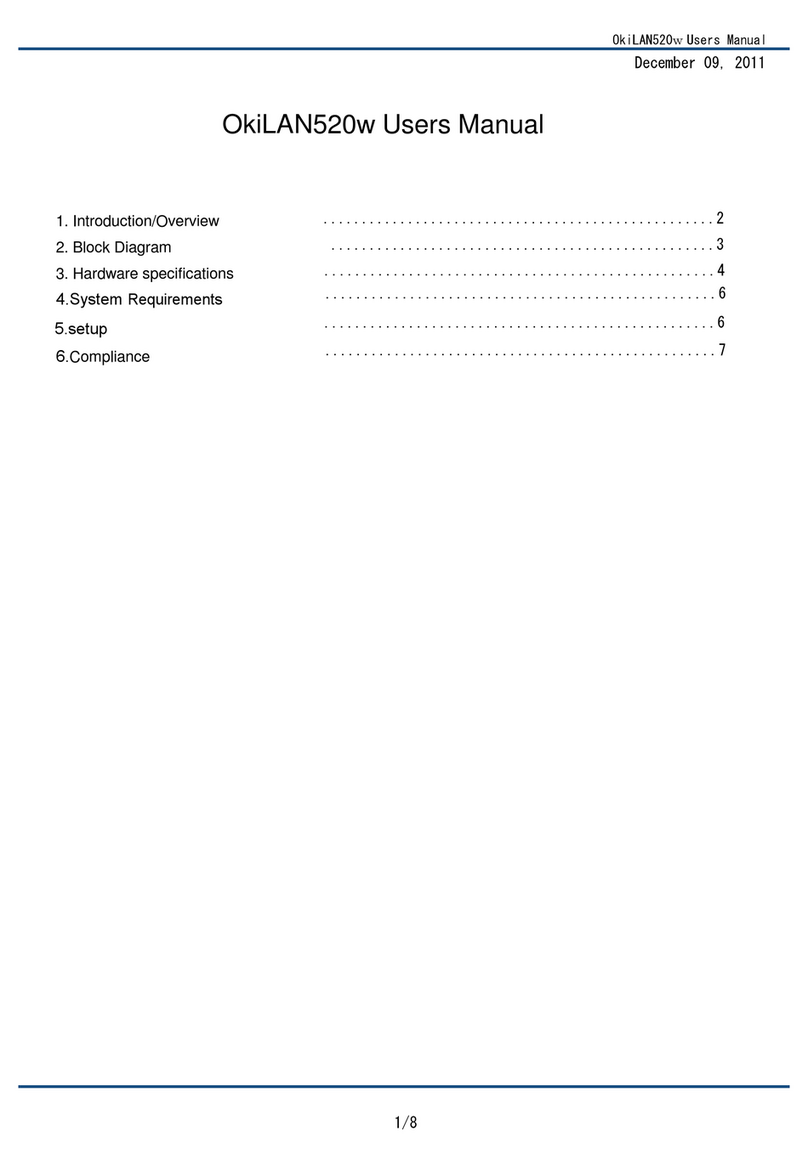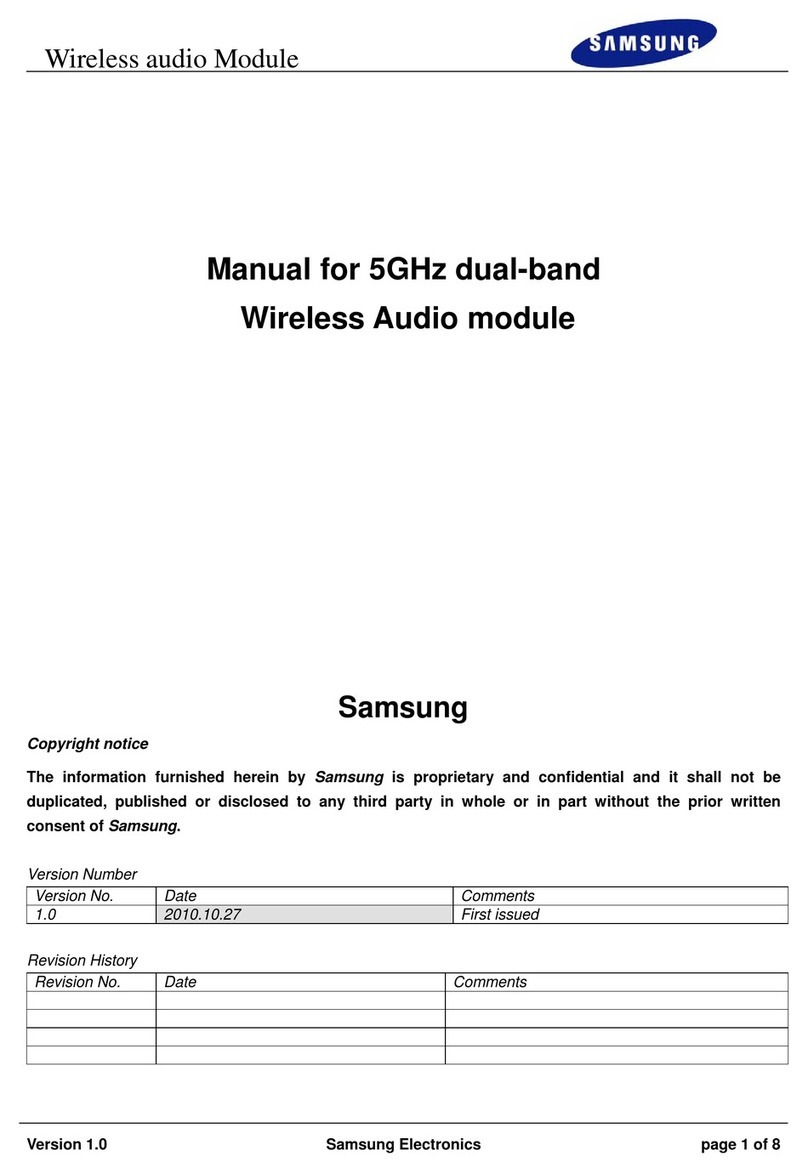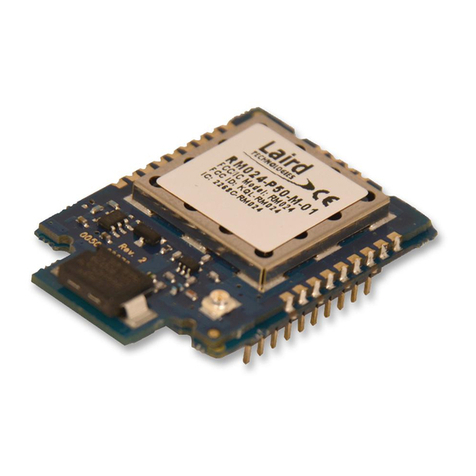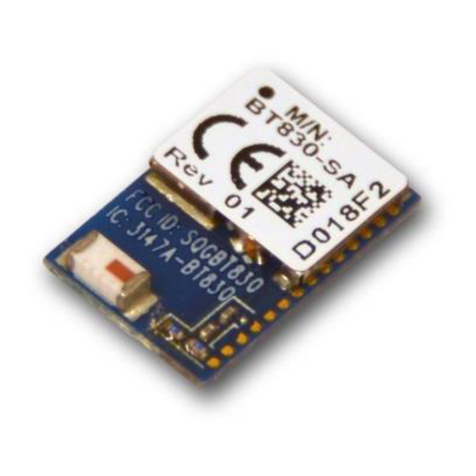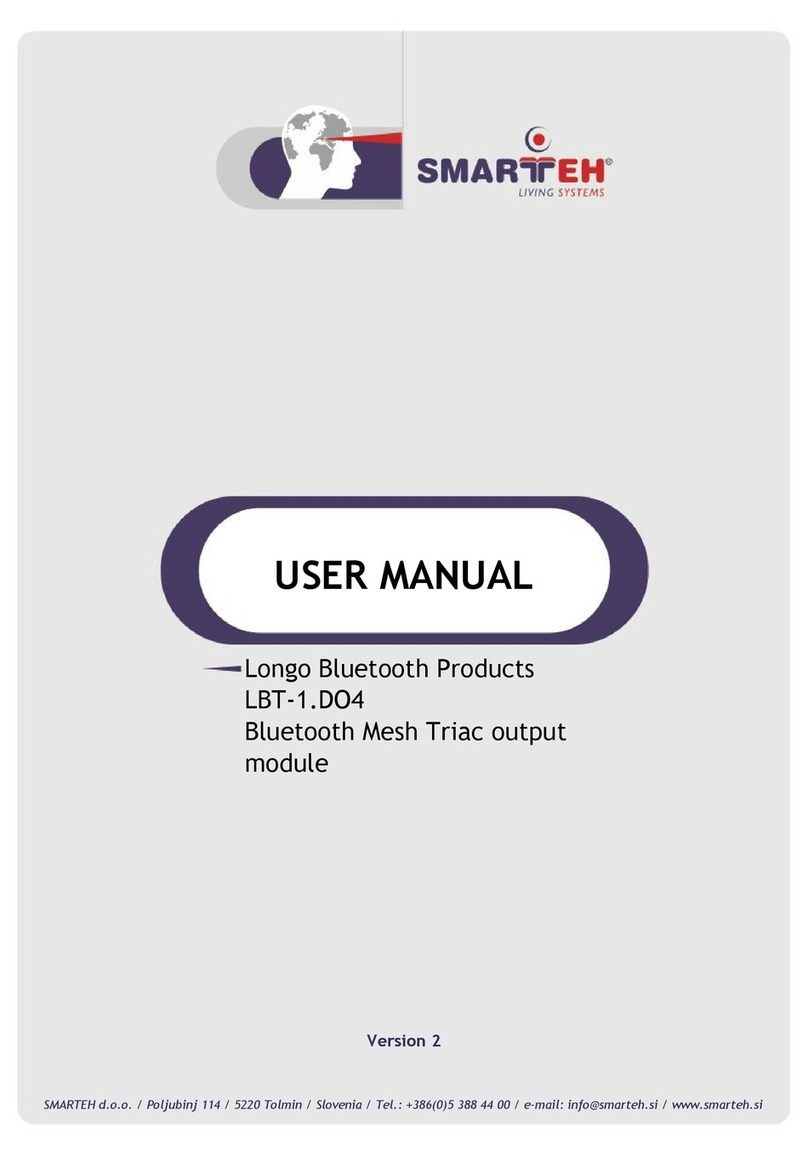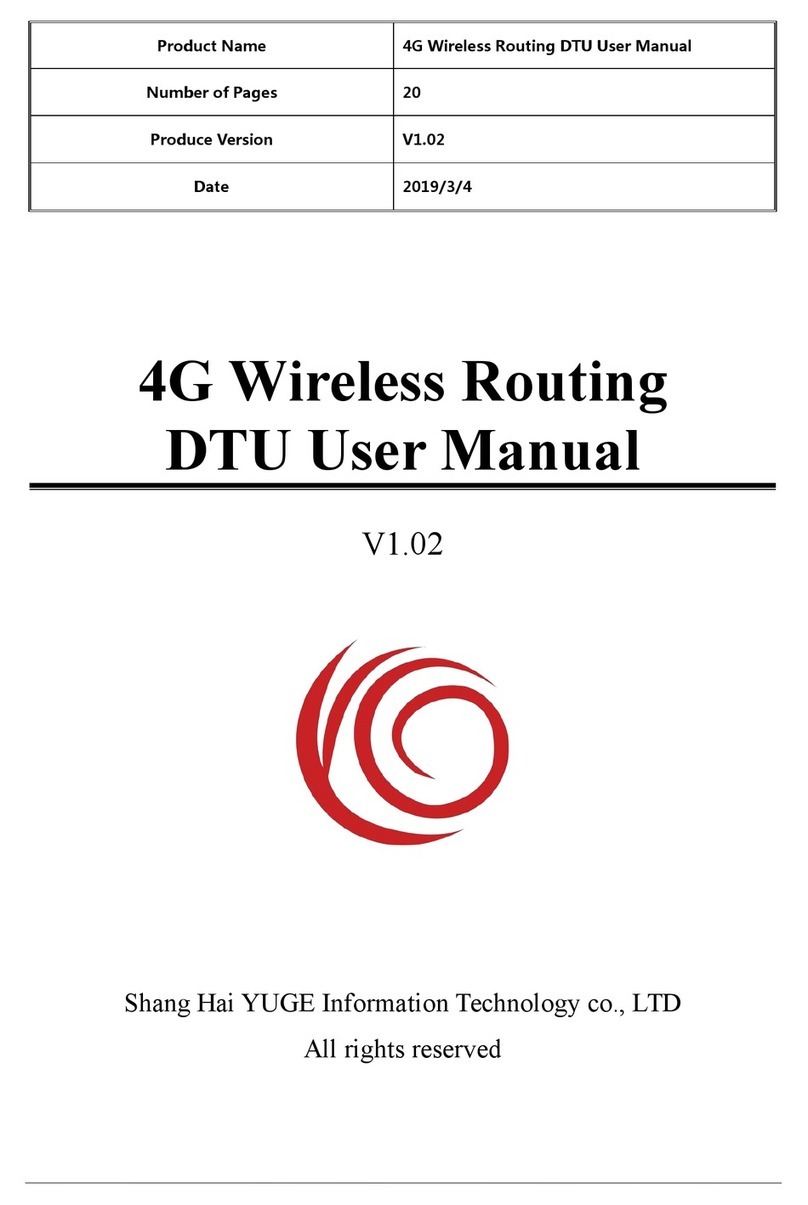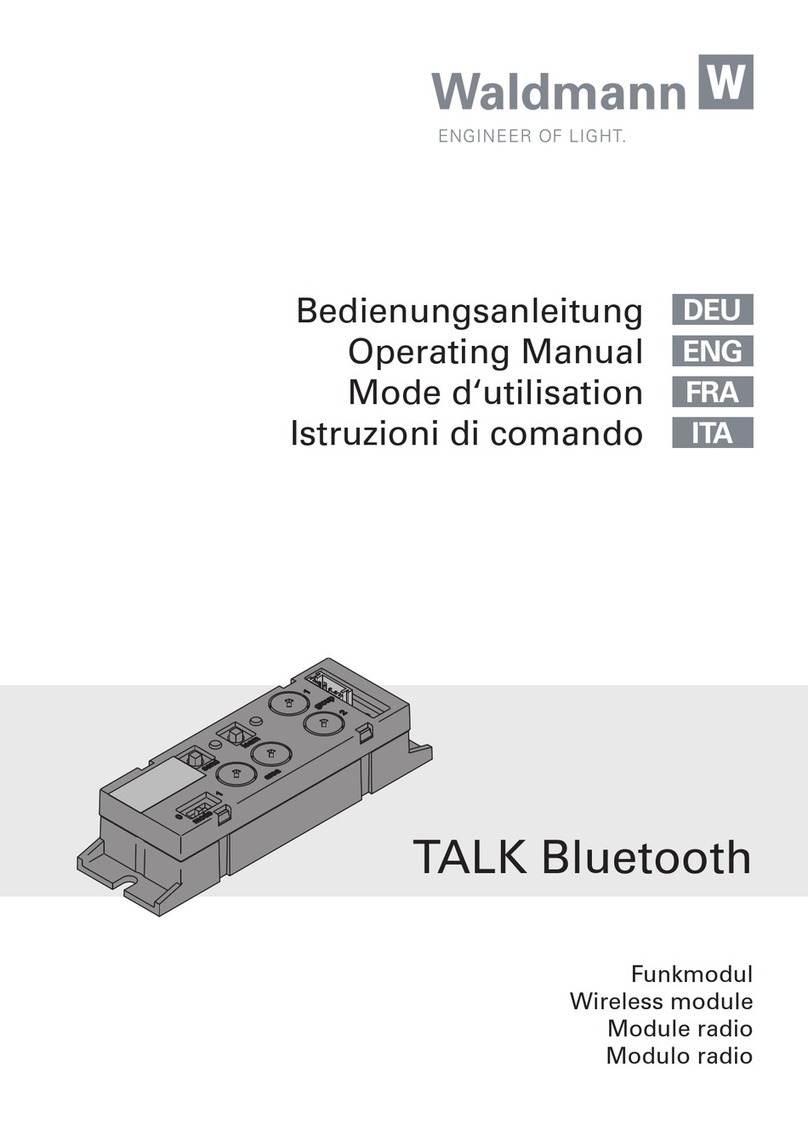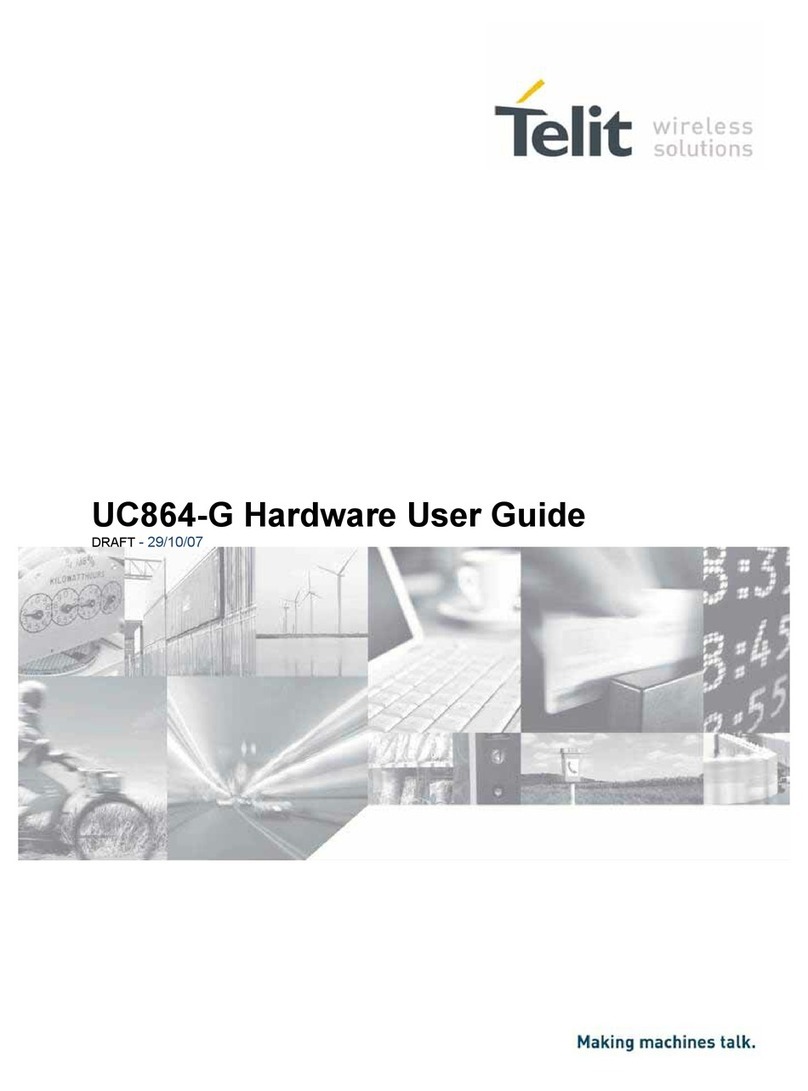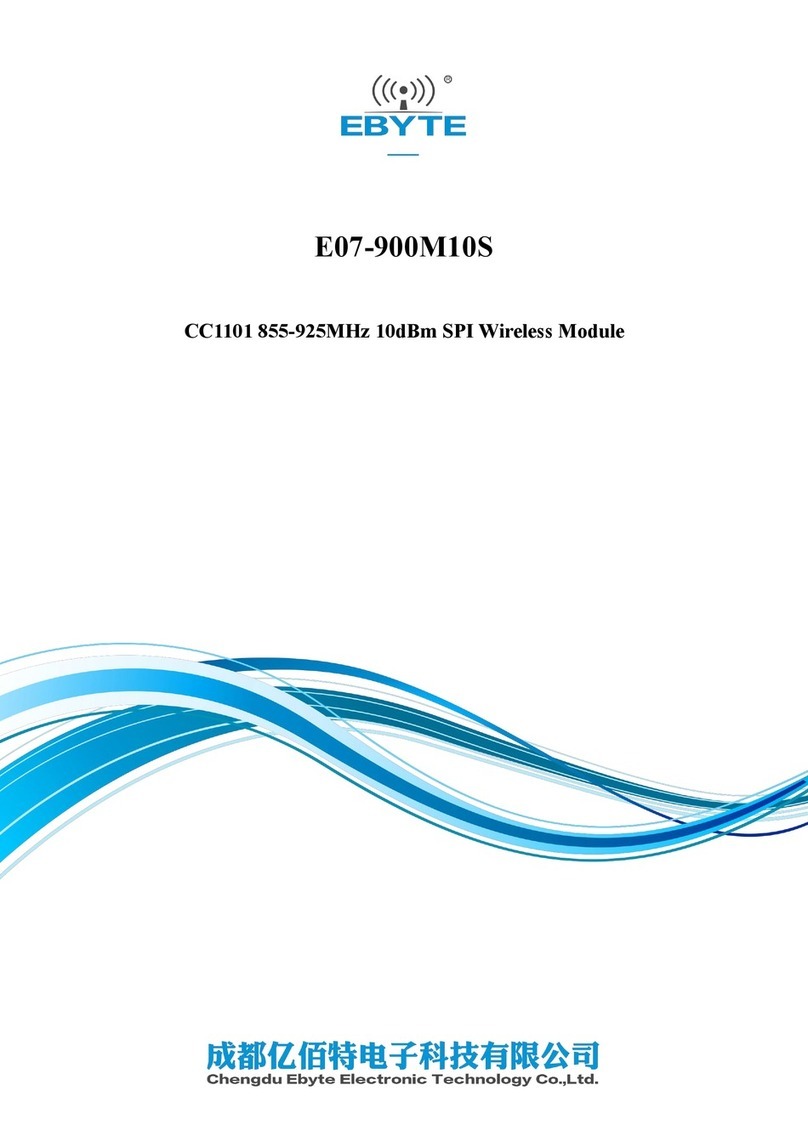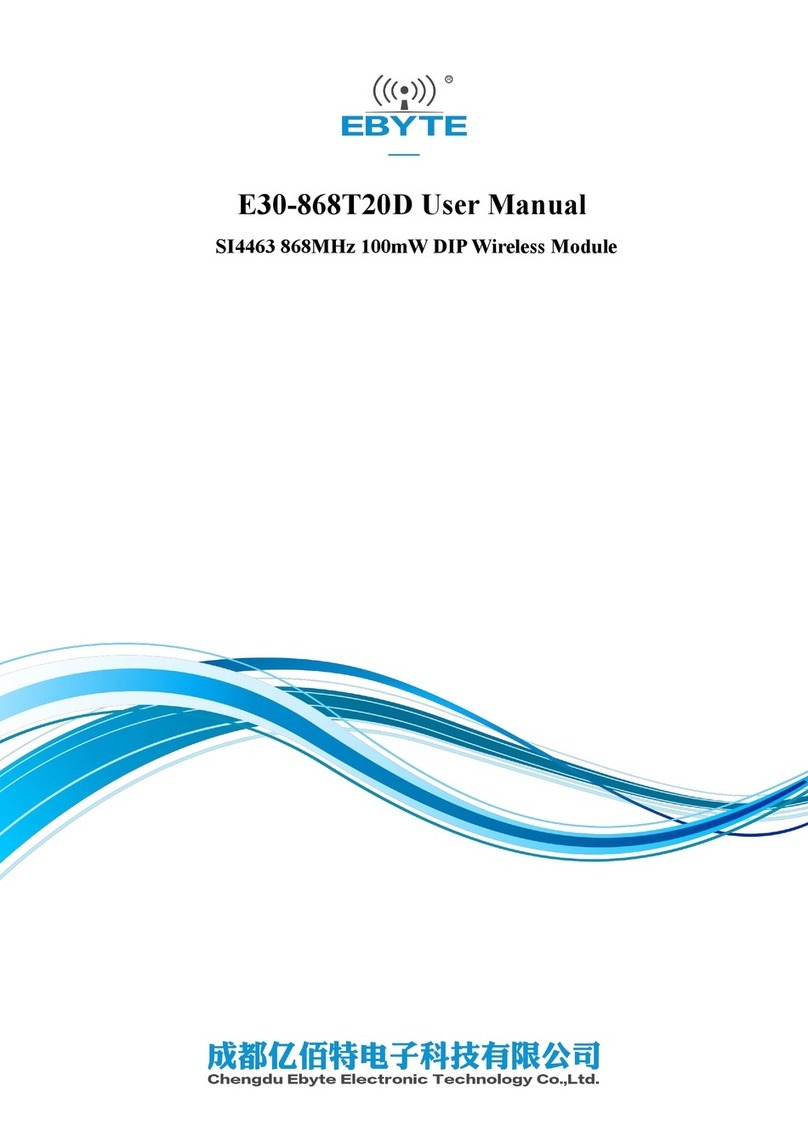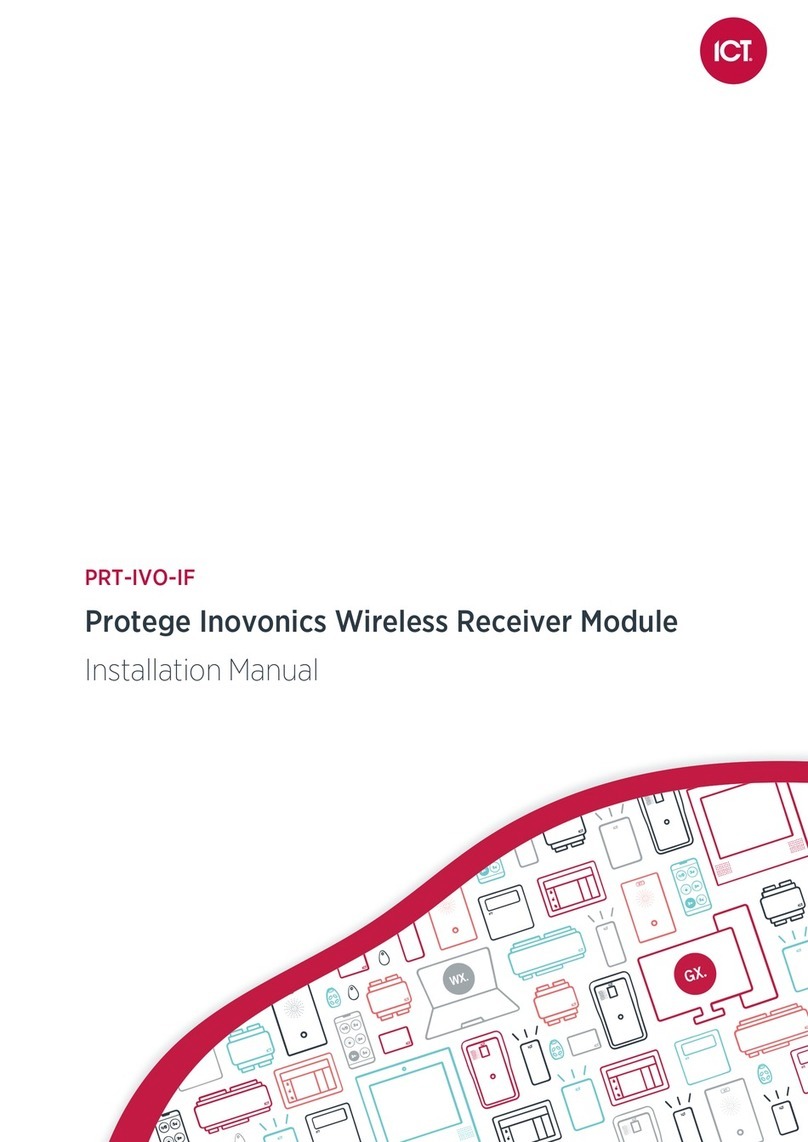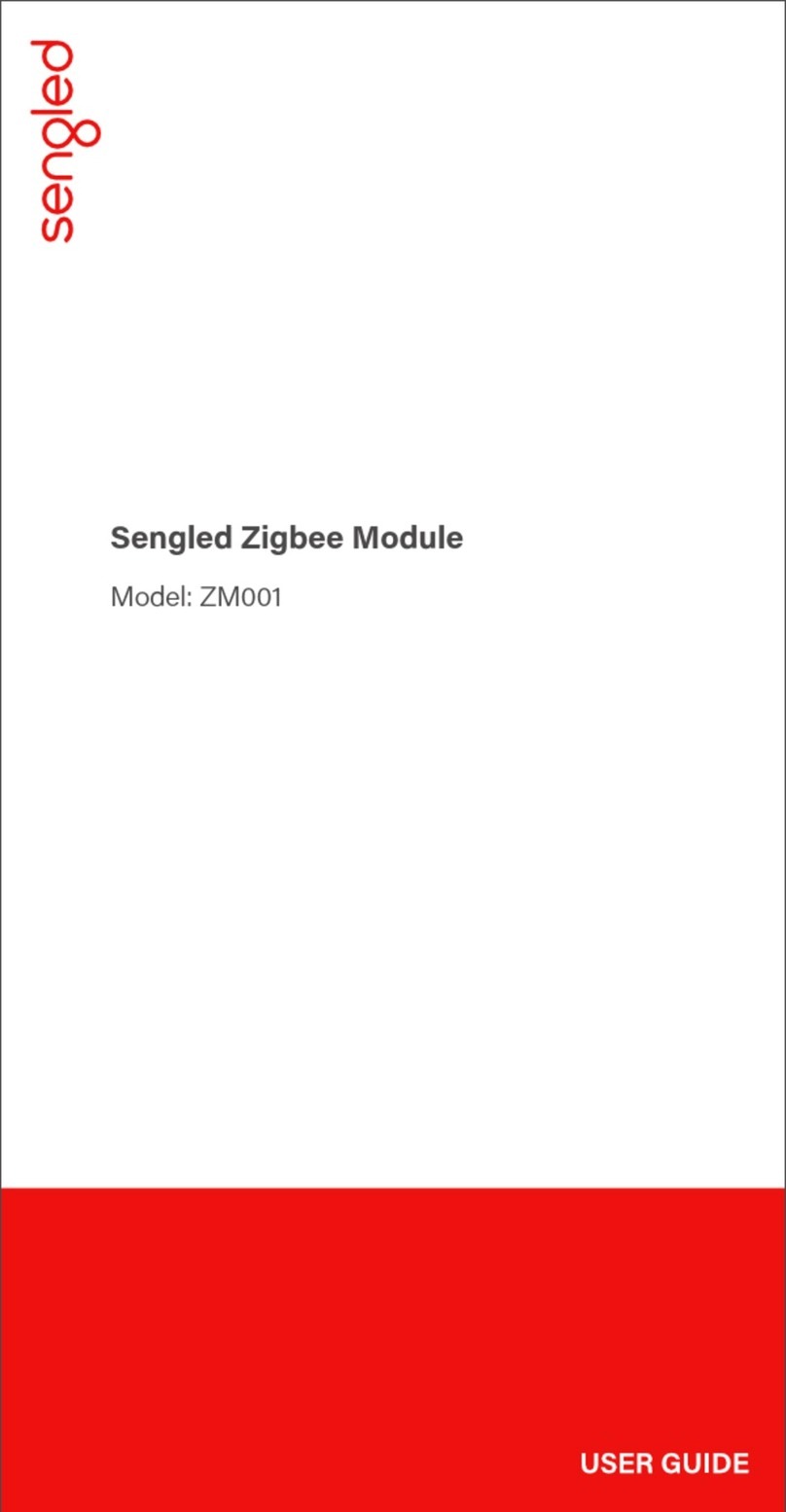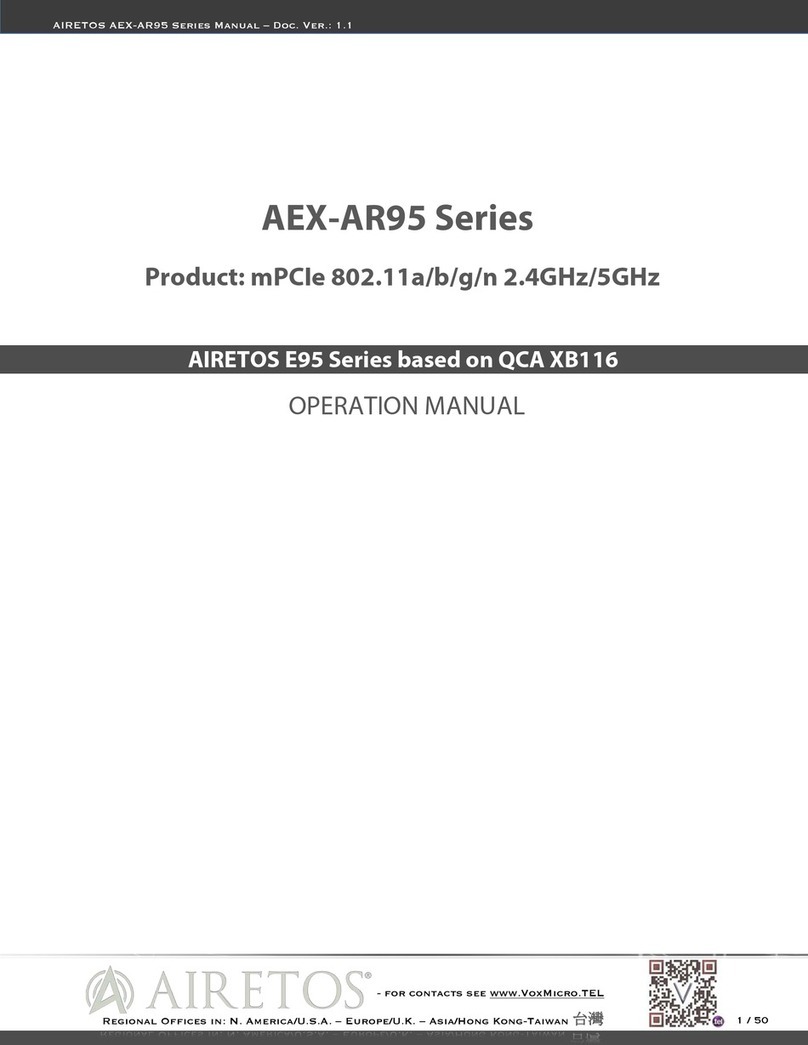LTE Standard Module Series
EM05-G Hardware Design
EM05-G_Hardware_Design 7 / 69
Table Index
Table 1: Special Marks ...............................................................................................................................12
Table 2: Frequency Bands and GNSS Systems of EM05-G Module ........................................................13
Table 3: Key Features of EM05-G..............................................................................................................14
Table 4: Definition of I/O Parameters......................................................................................................... 18
Table 5: Pin Description ............................................................................................................................. 18
Table 6: Overview of Operating Modes...................................................................................................... 23
Table 7: Definition of VCC and GND Pins.................................................................................................. 26
Table 8: Definition of FULL_CARD_POWER_OFF# .................................................................................29
Table 9: Definition of RESET# Pin .............................................................................................................32
Table 10: Pin Definition of (U)SIM Interfaces............................................................................................. 35
Table 11: Pin Definition of USB Interface................................................................................................... 39
Table 12: Pin Definition of PCM Interface .................................................................................................. 42
Table 13: Pin Definition of Control and Indication Interfaces.....................................................................43
Table 14: RF Function Status..................................................................................................................... 43
Table 15: GNSS Function Status ............................................................................................................... 44
Table 16: RF Status Indications of WWAN_LED# ..................................................................................... 45
Table 17: State of WOWWAN# ..................................................................................................................46
Table 18: Function of the DPR ................................................................................................................... 46
Table 19: Pin Definition of COEX Interface................................................................................................ 47
Table 20: Pin Definition of Antenna Tuner Control Interface...................................................................... 47
Table 21: Configuration Pins List of M.2 Specification............................................................................... 48
Table 22: Configuration Pins of the Module ...............................................................................................48
Table 23: EM05-G Connector Definition of Antenna Interfaces.................................................................50
Table 24: Module Operating Frequencies.................................................................................................. 50
Table 25: EM05-G Conducted RF Receiving Sensitivity ...........................................................................52
Table 26: Conducted RF Output Power of EM05-G...................................................................................53
Table 27: GNSS Frequency ....................................................................................................................... 54
Table 28: GNSS Performance....................................................................................................................55
Table 29: Major Specifications of Antenna Connectors ............................................................................. 57
Table 30: Antenna Requirements...............................................................................................................59
Table 31: Power Supply Requirements...................................................................................................... 60
Table 32: Current Consumption of EM05-G...............................................................................................60
Table 33: Logic Levels of Digital I/O (1.8 V)............................................................................................... 63
Table 34: (U)SIM 1.8 V I/O Requirements .................................................................................................63
Table 35: (U)SIM 3.0V I/O Requirements .................................................................................................. 64
Table 36: ESD Characteristics of EM05-G (Temperature: 25 ºC, Humidity: 45 %) ...................................64
Table 37: Absolute Maximum Ratings........................................................................................................ 66
Table 38: Operating and Storage Temperatures........................................................................................66
Table 39: Related Documents.................................................................................................................... 70
Table 40: Terms and Abbreviations ............................................................................................................ 70
